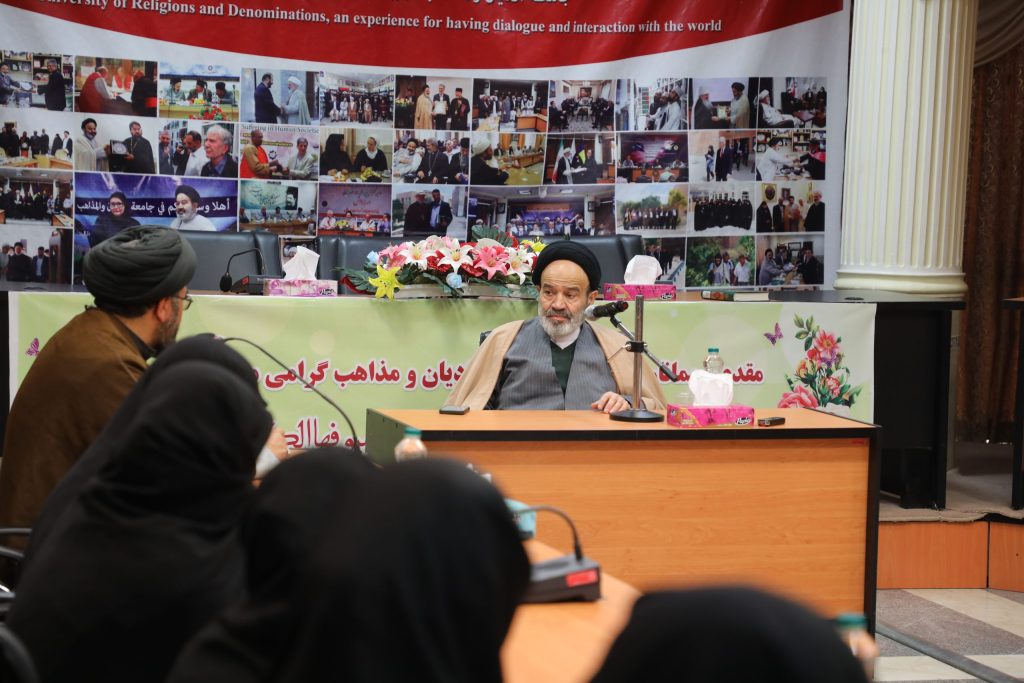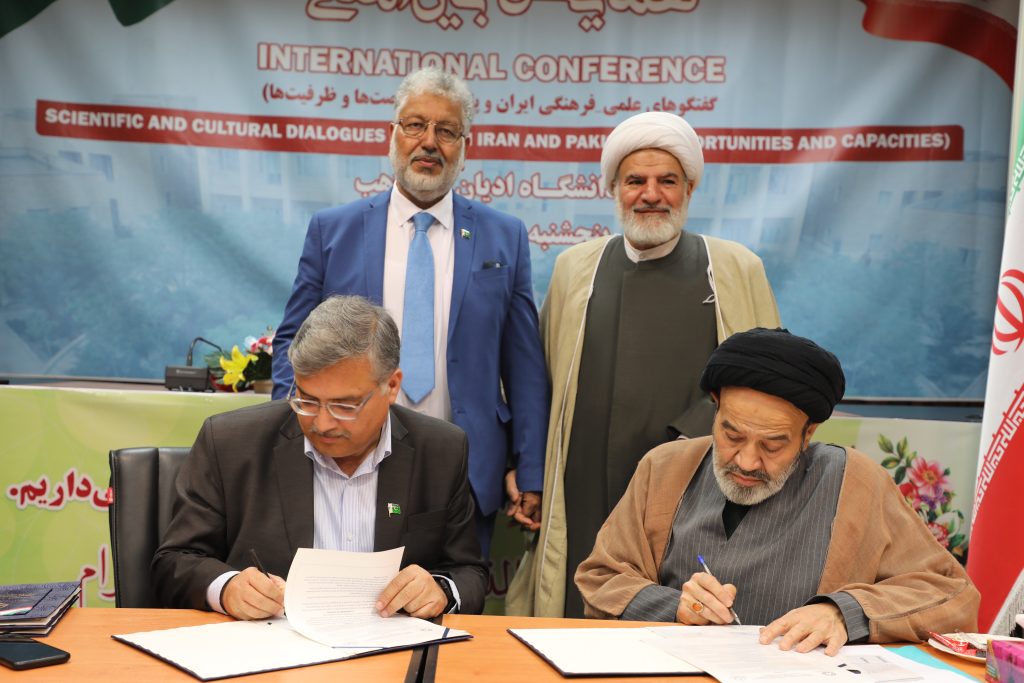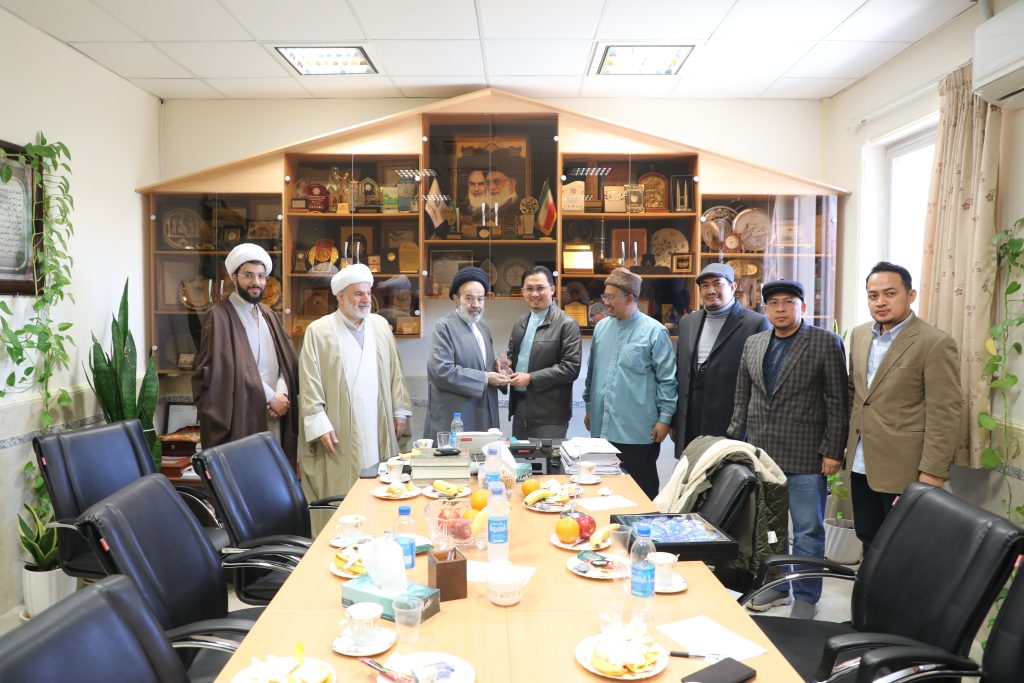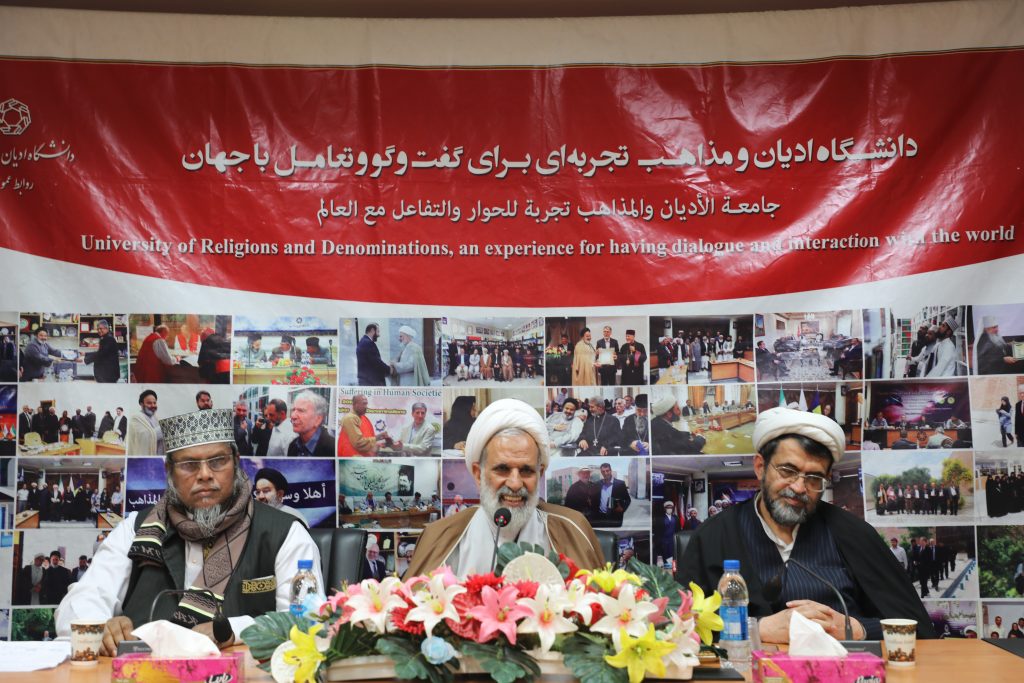Angels and Demons in Christianity and Islam Compared at URD by German Professor
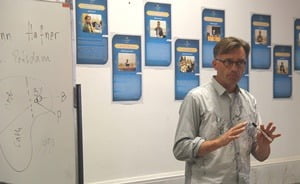
Managed by Prof. Hafner, theologian and faculty member of German,s Potsdam University, a four-session course was held at the University of Religions and Denominations, URD, on Angels and Demons in Christianity and Islam.
Professor Johan Hafner who was the guest of URD since Sep, 21st to 28th, was warmly welcomed by an interested group of applicants including students and professors of different fields of religious studies.
The guidelines of the course were as follows:
|
Angels and Demons in Christianity and Islam |
|
| 1. Looking for traces
Angels in pop-culture: Comics, films, songs
|
Students and teachers share experiences, where they encounter angelic motives |
| Last Judgement by Fra Angelico | Interpretation of two of the most prominent pieces of medieval and renaissance Christian art
Different sorts of angels Devils and angels |
|
Last Judgement by Michelangelo |
|
| 2. Recalling the official teachings
Angels and Demons as defined and described in orthodox texts obligatory and optional beliefs (credenda and credibilia)
|
Students look up normative texts like: Handbooks of faith, dogmatics, catechisms, – in groups
Apparitions, communications, language Time, space, numbers |
| Comparison of official teachings | in plenary session |
| 3. Definition of intermediary beings
– Phenomenology and Functions |
Lecture
Text by religious studies-scholars |
| 4. Selected Readings in Bible and Qur’an
Know contents, understand context, find intentions. – e.g. Abrahams Sacrifice, Sarah and angel, Angel in burning bush, Angel in fire-pillar, Gabriel and Mary, Angel and resurrection, Michael and dragon – e.g. Seraphim in Jes 6, Cherubim in Hes 1 |
each student presents one passage (including
modern commentary traditional commentary |
| Commonalities and differences | in plenary session |
| 5a. Selected Readings in further texts: Apocryphal/Gnostic and Hadith/Sufi
– eg. Gospel of Peter, Apokryphon of John, Life of Adam and Eve (the fall of Satan), Ascension of Isaja – The fall of Iblis in Qor’an, Sufi texts eg. Attar |
each student presents one passage (including
modern commentary traditional commentary
|
| 5b. Comparison
– situation before fall – motive of fall – consequences |
Lecture and plenary session |
| 6. Angels in individual life
– birth and childhood – souls and angels – danger, temptations and decisions guardian angels/jinns – marriage – Rafael – death /Marut and Michael |
Collect experiences, relate to canonical texts eg. Jud, ? |
| 7. Angels in folk-culture
Eg. Symbols, prayers, amulets, rituals Angel-veneration, angel-admiration, |
Collect and analyze experiences and depictions |
| 8. Modern interpretations: Stringfellow, Wink
– angels as anonymous powers (in states, in teams) – angels collective feelings, social systems |
Lecture |
| Reading time | |
Angelology and Monotheism
|
Discussion on Henri Corbin: The necessity of angelology (www.amiscorbin.com/bibliographie/the-paradoxe-of-the-monotheism)
and |
| The evolution from polydaimonism to monotheism | Discussion on Robert Bellah: Religious Evolution, in: Beyond Belief, New York 1970, 20-45 |
| Conclusion | |

